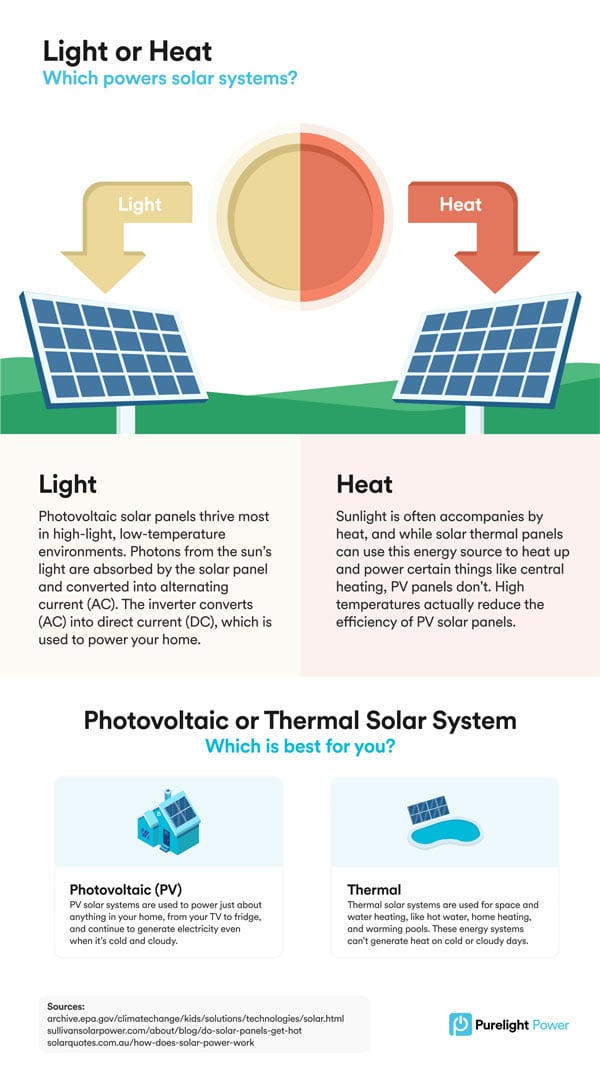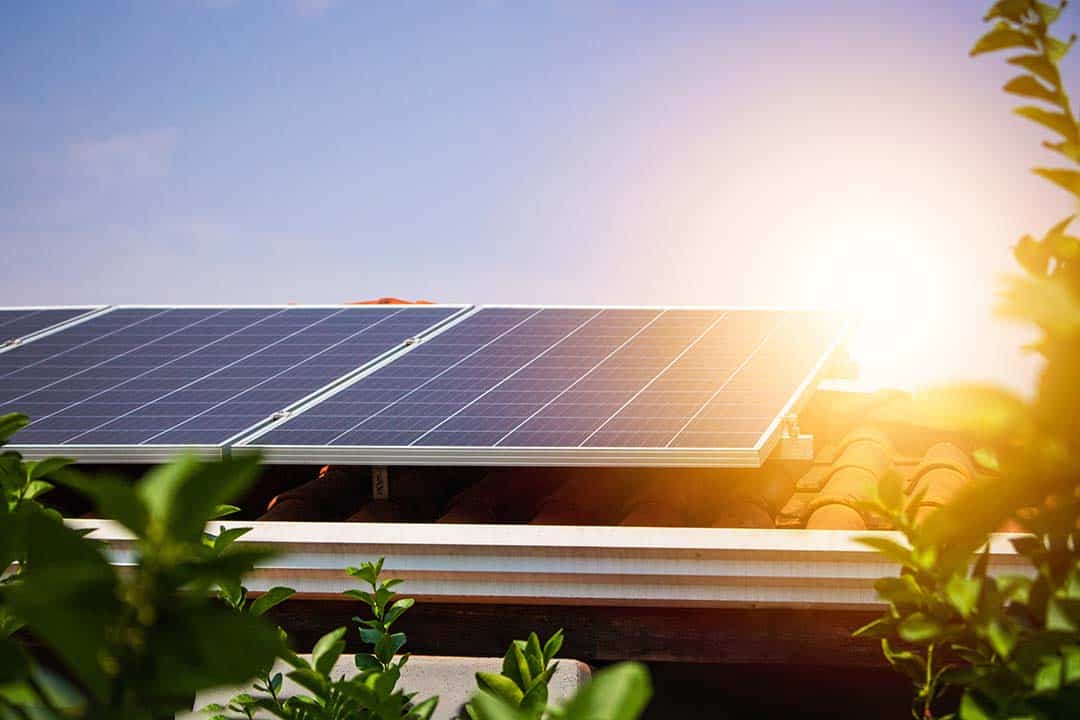Considering investing in a solar energy system? One of your main questions is probably about how solar energy systems use light or heat generate power.
The simple answer is the sun. But do panels use light or heat to turn that energy into electricity?
It’s a good question, and to give you the quick answer, solar panels that are photovoltaic. So they work by absorbing light, not heat, from the sun.
Solar panels even have an anti-reflective coating that increases sunlight absorption, allowing the cells to soak up more sunlight.
If you want to know more, keep reading below. We’ll cover the specifics of how light and heat both affect panels, and how they can both be beneficial for you and your home.
How Do Solar Energy Systems Make Power?
Solar panels source energy from the sun, which seems pretty simple at face value. However, the way the sun affects solar panels is a little more complex than what meets the eye. Heat can be the enemy for the production of electricity with solar panels, with high temperatures during the summer actually reducing solar panel efficiency.
You might be surprised, but the perfect weather conditions for solar panels to produce energy are strong sunlight and cooler temperatures.
Photovoltaic cells that make up solar panels absorb light emitted by the sun and generate an electric current that is created to alternating current (AC). Which is then sent through an inverter that changes AC to direct current (DC) which is the electricity you use for your house.
While all sunlight is good for solar panels, there are times when heat isn’t. Heat can negatively impact the efficiency of photovoltaic solar panels during periods of prolonged high temperatures.
To understand why, it’s important to know that when solar panels are developed their power output is usually tested with the temperature in the test facility at 77°F. This means maximum efficiency for panels is for a balmy mid-70s degree day.
So what happens when it’s hotter? A solar panel’s power output will decrease by half of a percent for every degree the temperature rises above 77 °F. Solar panels produce maximum efficiency between temperatures of 59°F and 95°F.
Turns out rural Iowa might be a better location for rooftop solar than Florida.
Can Solar Energy Systems Benefit from Heat?
There are some solar energy systems that like heat. Unlike photovoltaic solar panels, solar thermal systems thrive off of the heat. These systems use solar thermal panels that reflect the heat from the sunlight and route it to appliances that can use this heat.
But how does heat become power? When the solar thermal panels reflect the sun’s rays, they use it to heat up a tube of gas or liquid.
These panels have a slightly higher overall efficiency because they directly transmit the heat from the sun, instead of using a process in order to transform the light into electricity. While that might make it seem like solar thermal panels are a better choice, homeowners looking to power a wide variety of electric devices in their home will find themselves limited.
The main usage for these solar thermal systems are for space and water heating, and can be a great choice for large buildings like apartment complexes and businesses. For homeowners, however, because of the space needed for a solar thermal system, they’re often not the most efficient option space or money-wise.
Without a lot of space, solar thermal systems can’t generate enough electricity to power your whole home. Small-scale thermal solar systems are best for things that can use the sun’s heat directly, like heating systems or a pool. Homeowners may also be wary of these panels since many contain dangerous components like antifreeze, which can cause a problem as the system ages and leaks form.

Which Type of Solar Should You Choose?
Homeowners who want to own their own solar energy systems, and get the perk of raising their home’s value while switching to clean, local energy, will benefit most from going with a photovoltaic system.
These systems use the light from the sun, and can continue working efficiently even during days where there are clouds and overcast weather.
There is, of course, the option to install a combination of light and heat capturing solar panels. Although that option often sees increased installation costs, possibly multiple systems to monitor, and the hassle of having your home’s electrical and heating systems not fully integrated.
Especially with the cost of photovoltaic solar systems falling, and their efficiency rising, it looks like these systems have captured the spot as the best choice for homeowners.
Power your home with sunlight!
As your top-rated local solar company, Purelight Power is here to help you go solar affordably!
We use only industry leading photovoltaic panels, so you can feel confident in your choice to go solar, and will get the most out of your solar panels.






